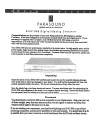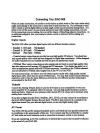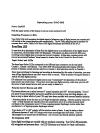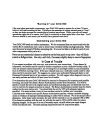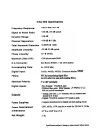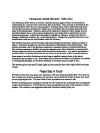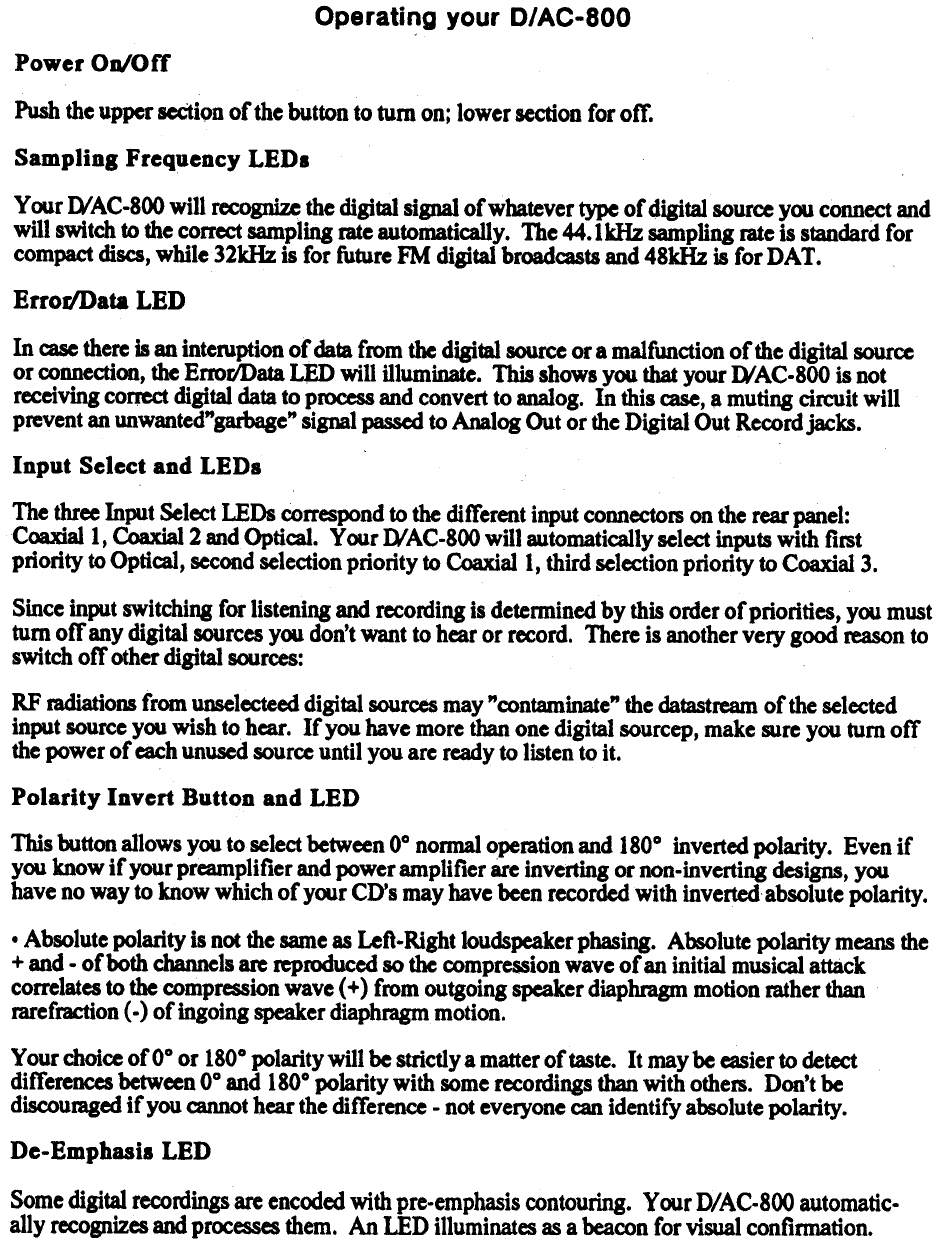
Operating your D/AC-800
Power On/Off
Push the upper section of the button to turn on; lower section for off.
Sampling Frequency LEDs
Your DI AC-800 will recognize the digital signal of whatever type of digital source you connect and
will switch to the correct sampling rate automatically. The 44. 1kHz sampling rate is standard for
compact discs, while 32kHz is for future FM digital broadcasts and 48kHz is for DAT.
ErrorIData LED
In case there is an interuption of data from the digital source or a malfunction of the digital source
or connection, the ErrorIData LED will illuminate. This shows you that your DI AC-800 is not
receiving correct digital data to process and convert to analog. In this case, a muting circuit will
prevent an unwanted"garbage" signal passed to Analog Out or the Digital Out Record jacks.
Input Select and LEDs
The three Input Select LEDs correspond to the different input connectors on the rear panel:
Coaxial 1, Coaxial 2 and Optical. Your DI AC-800 will automatically select inputs with first
priority to Optical, second selection priority to Coaxial 1, third selection priority to Coaxial 3.
Since input switching for listening and recording is detennined by this order of priorities, you must
turn off any digital sources you don't want to hear or record. There is another very good reason to
switch off other digital sources:
RF radiations from unselecteed digital sources may "contaminate" the datastream of the selected
input source you wish to hear. If you have more than one digital sourcep, make sure you turn off
the power of each unused source until you are ready to listen to it.
Polarity Invert Button and LED
This button allows you to select between 00 normal operation and 1800 inverted polarity. Even if
you know if your preamplifier and power amplifier are inverting or non-inverting designs, you
have no way to know which of your CD's may have been recorded with inverted absolute polarity.
. Absolute polarity is not the same as Left-Right loudspeaker phasing. Absolute polarity means the
+ and - of both channels are reproduced so the compression wave of an initial musical attack
correlates to the compression wave ( +) from outgoing speaker diaphragm motion rather than
rarefraction ( - ) of ingoing speaker diaphragm motion.
Your choice of 00 or 1800 polarity will be strictly a matter of taste. It may be easier to detect
differences between 00 and 1800 polarity with some recordings than with others. Don't be
discouraged if you cannot hear the difference - not everyone can identify absolute polarity.
De-Emphasis LED
Some digital recordings are encoded with pre-emphasis contouring. Your D/ AC-800 automatic-
ally recognizes and processes them. An LED illuminates as a beacon for visual confinnation.



